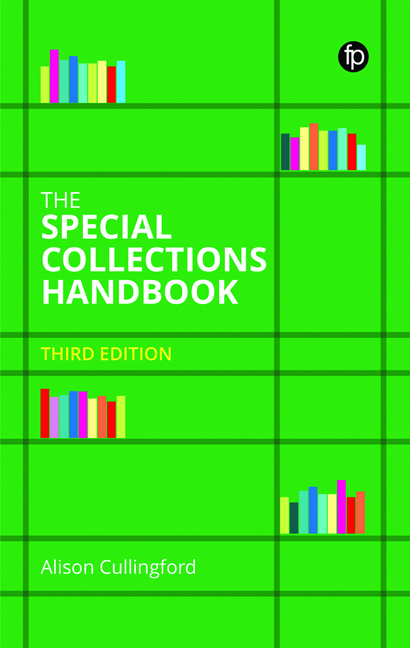Book contents
8 - User Services in Special Collections
Published online by Cambridge University Press: 28 April 2022
Summary
Introduction
Why do libraries care for collections, collect, catalogue and digitise them? So that people now and in future can use them. This chapter is the first of four to consider the challenges of bringing people and collections together. Each takes a different perspective on user access.
Firstly, this chapter covers user services:
1 Introducing Special Collections users.
2 Challenges and ways forward.
3 Enquiries.
4 Reading room visitors.
5 Group visits.
6 Trippers and tourists.
7 Virtual visits.
8 Reprographics.
9 Exhibitions.
10 Inter-library loans.
11 Valuations.
12 Improving services to users.
13 Suggestions for further reading and useful websites.
A note on terminology
What do we call the people who use our collections? A tricky question and, as we have already observed, the language we use matters.
• Are they customers? Sometimes, if they pay for access or a service. But the term implies a transactional relationship, which may not fit well.
• Clients? As above: even more transactional?
• Patrons? Common in US sources, but in the UK means someone who financially supports the library.
• Readers? Visitors don't necessarily come to ‘read’ and the term has academic connotations.
In this book, I have adopted the neutral terms ‘user’ or ‘visitor’.
Meet the Special Collections users
To provide appropriate user services, it is essential to understand who users are and why they might wish to use Special Collections. We introduce them here, but for a more strategic focus see Chapters 9 and 10.
Internal or external?
The relationship of a user to the organisation is a crucial question:
1 Internal, e.g., members, staff or students of a university, trustees, other employees, volunteers. A finite, known population, usually (not always) on-site.
2 External, i.e., general public. Much more scope for growth, but harder to analyse. External users may prefer remote services; when they do visit, need opening hours that allow them plenty of contact with collections.
Of course, an individual might be internal or external to a particular organisation at different life or career stages. Affiliation, for example, Friends groups (see Chapter 14) makes externals more internal.
What is the ‘right’ balance between internal and external users for Special Collections? A high proportion of external users may indicate a lack of internal relevance, which may lead to threats later.
- Type
- Chapter
- Information
- The Special Collections Handbook , pp. 187 - 224Publisher: FacetPrint publication year: 2022



